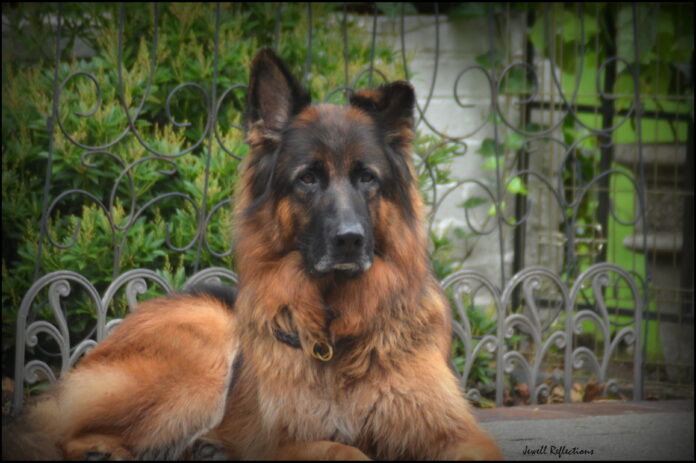By Fran Jewell

Every day I am approached by dog owners whose dogs have practically pulled their arm out of the socket, or jumped on them and knocked them down, or stolen an expensive turkey off the counter. In one incident, years ago, I had a client whose dog actually pulled him over and broke his face, requiring three reconstructive surgeries! Then the dog pulled over his wife, who ended up having to go to physical therapy for six months for her back! This was the epitome of the worst case I have ever seen. The work to make this dog safe was on the highest level of difficulty because the puppy was not taught respect and leadership early on.
Usually, we think of a dangerous dog as one that is likely to bite or threatens someone. A dangerous dog is also one that threatens someone’s health or is a danger to the dog itself.
When I see these things happening, I have to make it perfectly clear to the owner that this is not acceptable and must be changed. It is not just a phase a young dog is going through that he will grow out of. It is the dog’s lack of respect for its owner that we have actually taught him, perhaps inadvertently.
The answers are not always simple. First and foremost, the dog owner must believe that these behaviors are indeed dangerous to himself and the dog.
There are many ways to approach dangerous behaviors. Prevention is always the best cure, in my book. That means when you bring a puppy home, you start training the minute the puppy comes in the door. Thinking a puppy should be given special privileges because they are young is very old-school thinking. Some still believe that obedience training should not start until the puppy is SIX MONTHS OLD! We know that puppies are learning machines and that there is a critical imprinting period up to 16 weeks old. What you allow is teaching them behavior that they will do for the rest of their lives. My tiny puppies learn how to “sit,” “down,” their name, “leave it,” “off,” wait for their meal and sit at the door to go out, and how to “watch me” before they go to their new homes. This means how young you start a dog in training is no longer restricted to half-a-year old! In many cases, allowing or encouraging jumping and pulling on the leash at a tender age is a life sentence to living with a disrespectful, dangerous dog as he gets older, bigger and stronger. It is very difficult behavior to stop once a puppy practices it for several months.
When trying to work with an older dog that is unruly, it is imperative to try different methods of training to determine which one works best for that dog and for you. One training method, as you might find on the Internet, may not fit your dog and stop unruly behaviors. One of my most disliked online training recommendations is to see jumping as “attention seeking,” then recommending turning your back to the dog to ignore it. It is not attention seeking. It is the dog or puppy exploring to see who you are as a leader. In the dog world, the higher you are [in stature], the higher you are in social status. Turning your back on the dog is actually YOU submitting to the dog, who is seeking to know social status. Walking into the dog reclaims your personal space and is usually much more effective.
The point here is that first you must see unruly behaviors as dangerous to your own health, especially when winter comes and you add ice to the mixture. It is dangerous for the dog that might get pancreatitis from eating inappropriate food or running into the street in front of a car. Focus on prevention early on if you have a puppy. If you have an older rescue, explore ALL the training methods or a seek a trainer experienced in many methods to help determine what will work best to help everyone stay happy and healthy. It is such a delight to live with a well-behaved dog!
Fran Jewell is an IAABC Certified Dog Behavior Consultant, NADOI Certified Instructor and the owner of Positive Puppy Dog Training, LLC in Sun Valley. For more information, visit positivepuppy.com or call 208-578-1565.



